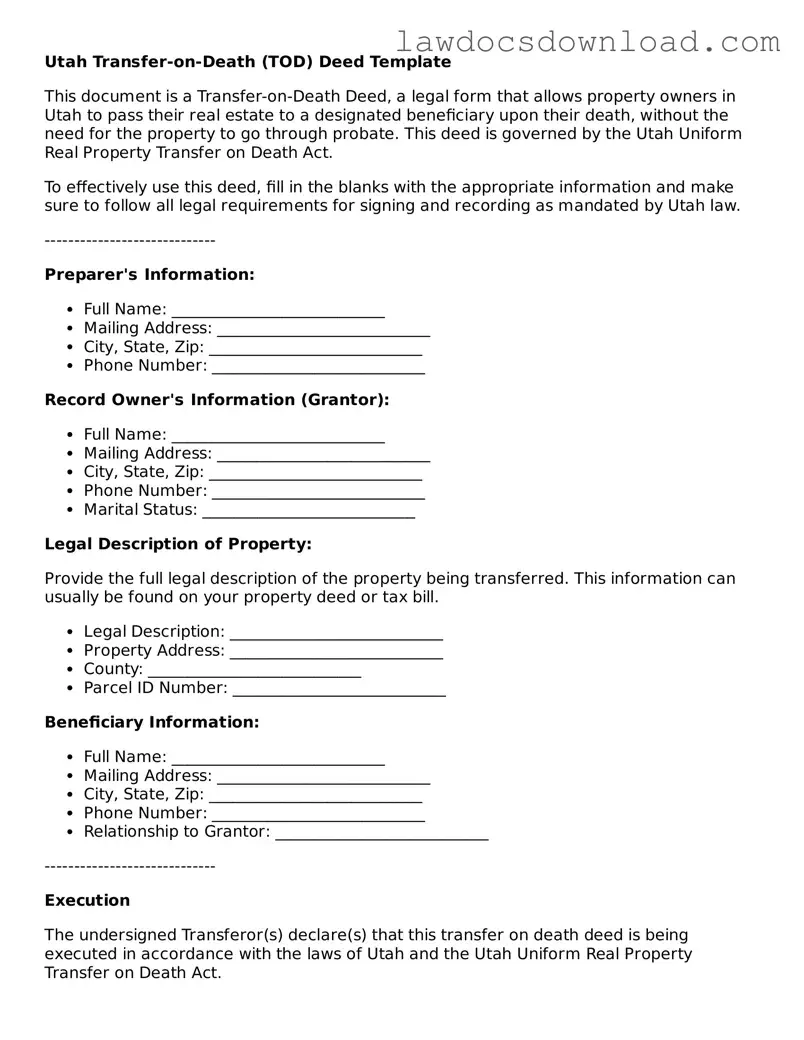Utah Transfer-on-Death (TOD) Deed Template
This document is a Transfer-on-Death Deed, a legal form that allows property owners in Utah to pass their real estate to a designated beneficiary upon their death, without the need for the property to go through probate. This deed is governed by the Utah Uniform Real Property Transfer on Death Act.
To effectively use this deed, fill in the blanks with the appropriate information and make sure to follow all legal requirements for signing and recording as mandated by Utah law.
-----------------------------
Preparer's Information:
- Full Name: ___________________________
- Mailing Address: ___________________________
- City, State, Zip: ___________________________
- Phone Number: ___________________________
Record Owner's Information (Grantor):
- Full Name: ___________________________
- Mailing Address: ___________________________
- City, State, Zip: ___________________________
- Phone Number: ___________________________
- Marital Status: ___________________________
Legal Description of Property:
Provide the full legal description of the property being transferred. This information can usually be found on your property deed or tax bill.
- Legal Description: ___________________________
- Property Address: ___________________________
- County: ___________________________
- Parcel ID Number: ___________________________
Beneficiary Information:
- Full Name: ___________________________
- Mailing Address: ___________________________
- City, State, Zip: ___________________________
- Phone Number: ___________________________
- Relationship to Grantor: ___________________________
-----------------------------
Execution
The undersigned Transferor(s) declare(s) that this transfer on death deed is being executed in accordance with the laws of Utah and the Utah Uniform Real Property Transfer on Death Act.
Date: ___________________________
Signature of Transferor (Grantor): ___________________________
Witnessed by:
- Witness #1
Name: ___________________________
Signature: ___________________________
Date: ___________________________
- Witness #2
Name: ___________________________
Signature: ___________________________
Date: ___________________________
Notarization
This document was acknowledged before me on (date) ____________ by (name of Transferor) ____________________________________.
___________________________
(Seal) Notary Public
My Commission Expires: ____________
-----------------------------
Instructions for Recording:
After completing and signing this deed in front of a notary, record the deed with the county recorder's office of the county where the property is located. Make sure to comply with all local requirements, including any fees or taxes associated with recording this deed. The recording of this document is critical as it validates the transfer on death deed.
